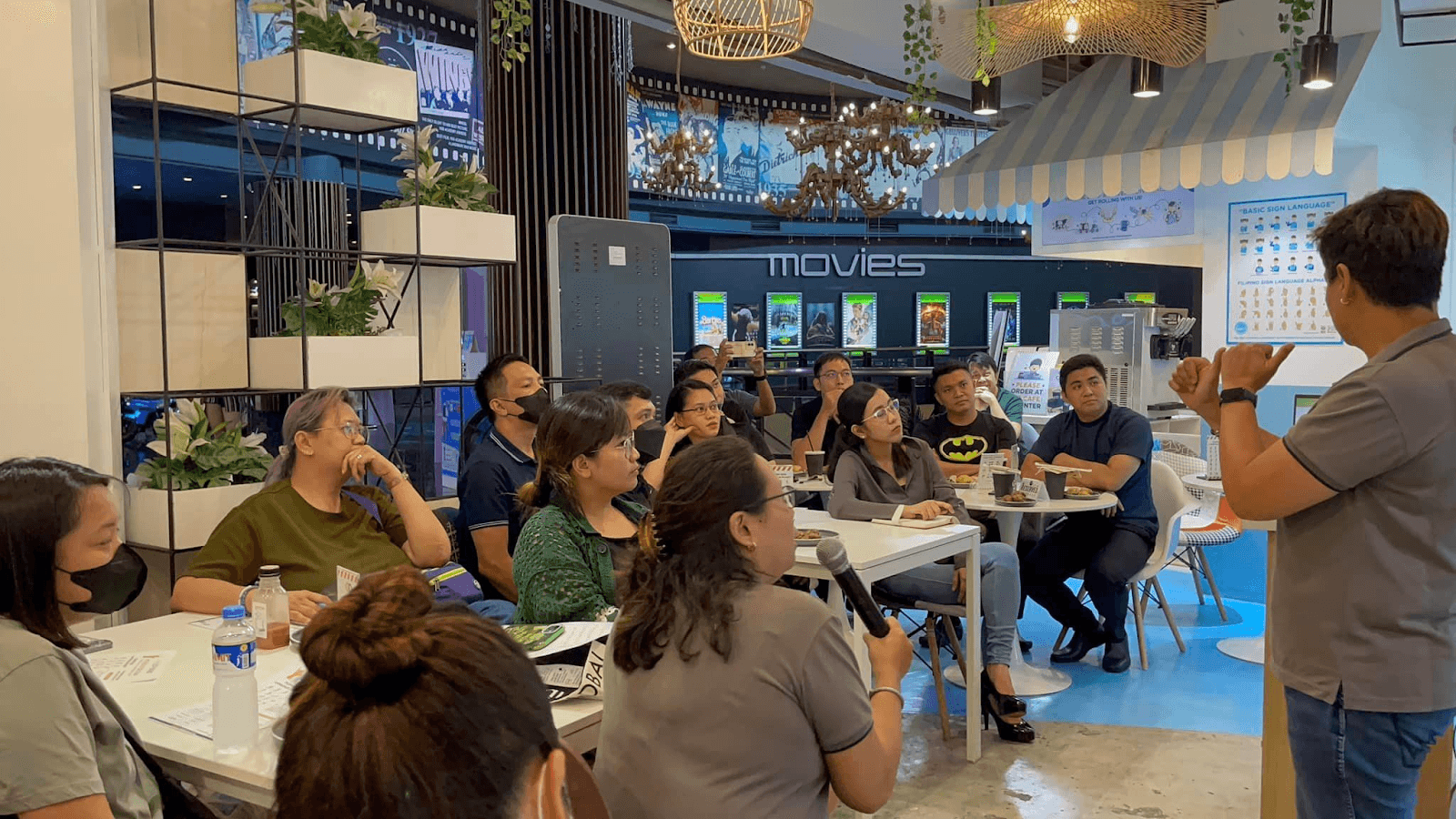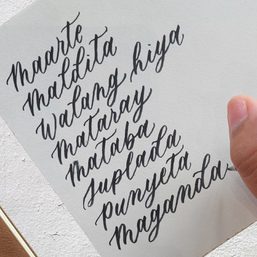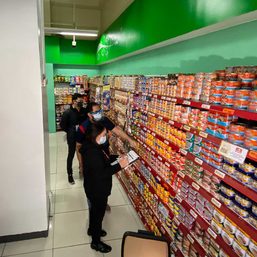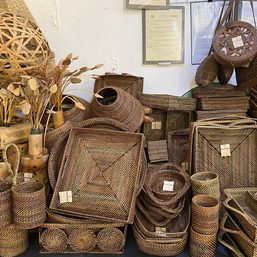SUMMARY
This is AI generated summarization, which may have errors. For context, always refer to the full article.

MANILA, Philippines – Did you know that words such as “Instagram” and “Twitter” have sign language counterparts? That’s how assimilated the sign language for deaf people is.
Here in the Philippines, which has more than 180 languages, the Filipino deaf community has been adjusting to new words in the current context to make sign language more inclusive.
In an interview with Rappler, organizations advocating for the deaf – Hand and Heart, and Deaf and Terp – showed dedication to promoting the use of Filipino Sign Language (FSL), as opposed to the usual American Sign Language (ASL) and Sign Exact English (SEE).
“I realized that I wanted to help the deaf community. To be a role model for the deaf community, to empower them so that they can stand against the challenges and oppression [the deaf faces]. Because I believe that the deaf, we are equal with the hearing,” Gen Diokno, co-founder of Hand and Heart, signed as interpreted by her co-founder, Elyse Aquino.
Deaf and Terp sign language news interpreter Bayani Generoso shared that when he first moved to Bicol after living in Canada for 30 years, a lot of the locals had a hard time understanding his ASL.
For instance, “coconut” in ASL is only indicated by one sign where one holds their hands in a circle and shakes it next to their head. However, as Filipinos interact with coconuts in several ways, multiple signs have developed for it; one sign shows the act of husking a coconut and another makes use of one’s arm as a tree and then removing a coconut with the other.
However, even with established signs, FSL is a dynamic system of communication that grows with the times.
Just as people feel the need to keep up with the evolving language of the internet, the Filipino deaf community consistently has conversations within their group to come up with signs for new concepts, such as “Twitter,” “Instagram,” and “views.” Outside of the online bubble, the Filipino deaf community has also been compelled to create signs related to the coronavirus disease.
As a whole, FSL is simply a more visual sign language as influenced by Filipinos’ unique use of body language. As observed by Deaf and Terp’s Generoso: “I think as Filipinos, we all love to communicate with our bodies, we love pointing [with our mouths]. We’re also very visual as Filipinos, we love to understand things through seeing.”
FSL is essentially an act of painting pictures with your whole body to communicate, so if you happen to be skilled in the parlor game charades, then you already have a head start.
How FSL helps
According to Diokno, participants join Hand and Heart’s FSL workshops for varying reasons – some are special education teachers wishing to accommodate deaf students, while others are parents wanting to communicate with their deaf children. Whatever their motivation, participants who finish FSL training are able to connect more deeply with the deaf people in their lives.

On the other hand, Deaf and Terp opts to have an all-deaf faculty in their training sessions to ensure that they are purely influenced by the lived experiences of the deaf.
“We want students to empathize with the deaf experience. That’s how deaf people live all their lives, being in situation[s] when nobody understands them. So as a hearing student having a deaf teacher, yes, it’s difficult. It’s challenging, but it’s worth the experience,” Natividad said.

Christine Baculio, a deaf teacher at Deaf and Terp, said that many of her students are often confused when first learning FSL, but this motivated her to teach more thoroughly.
“I would really emphasize the five parameters of sign language, the facial expressions, the movements, so that hearing people can sign like deaf people,” Baculio said as interpreted by Natividad.
Despite being a language of its own, FSL is often thought of as directly mimicking spoken language. However, FSL consists of five parameters: hand shape, location, palm orientation, movement, and non-manual signal (NMS), all of which can make the difference between a genuine response and a snarky remark.
Even after her students have graduated, Baculio encourages them to tap into their social skills and befriend those in the deaf community: “It’s not enough to be learning just in class in the FSL course, you really have to go out to the deaf community, be exposed, and meet with them,” she signed as interpreted by Natividad.
Integration in schools
In 2018, Rodrigo Duterte’s administration passed Republic Act 11106, declaring FSL as the official sign language of the Filipino deaf. Despite this, Natividad believes the law suffers from a lack of formal implementation.
Amid long lines and often intimidating officers, there is also a scarce number of professionals who employ sign language, leaving basic services inaccessible to deaf people. “It’s the hearing that is able to give them access to basic needs, meaning proper health and government assistance,” Natividad shared.
While schools in the Philippines have strived to offer foreign language classes, many do not give their students the chance to learn FSL.
Bayani shared that the notion of ASL being superior to FSL is prevalent, preventing the Department of Education from adjusting the educational system to fit the needs of deaf students.
Sharing this sentiment, Diokno believes the integration of FSL in academic curriculum will help bridge the seemingly daunting gap between deaf and hearing people. “[Hearing people] will not be afraid in approaching deaf people. They can help each other without boundaries,” Diokno shared as interpreted by Aquino.
In an act of blurring these boundaries, an honor graduate recently delivered a graduation speech in sign language for her deaf parents. This serves as an exceptional instance of inclusion towards the deaf – but it does not have to remain so uncommon.
“I hope that more hearing people will learn FSL to be able to create better friendships [with the deaf]. The more that people get to know our language and culture, the [more] they can help us,” Diokno added as interpreted by Aquino. – with reports from Katrina B. Antonio/Rappler.com
Katrina B. Antonio is a Rappler volunteer from Ateneo de Manila University. She is currently a fourth year student taking up Bachelor of Arts in Communication.
Add a comment
How does this make you feel?









There are no comments yet. Add your comment to start the conversation.